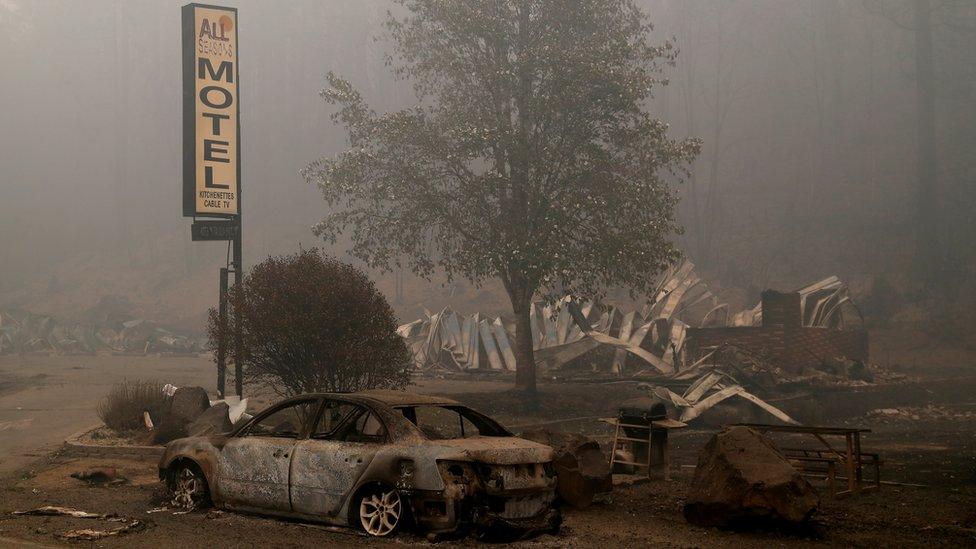Hurricane Sally: Deadly storm leaves 550,000 without power in US
- Published
"That's my car... submerged": Video shows flooded streets in Pensacola, Florida
Tropical Storm Sally has left more than half a million Americans without power as its torrential rains and storm surges lashed the US Gulf coast.
Sally weakened after it made landfall as a Category 2 hurricane on Wednesday, but the slow-moving storm continues to batter Florida and Alabama.
One person was killed and hundreds were rescued from flooded areas.
Pensacola, in Florida, was badly hit, with a loose barge bringing down part of the Bay Bridge.
"Catastrophic and life-threatening flooding continues over portions of the Florida Panhandle and southern Alabama," the National Hurricane Center (NHC) said.
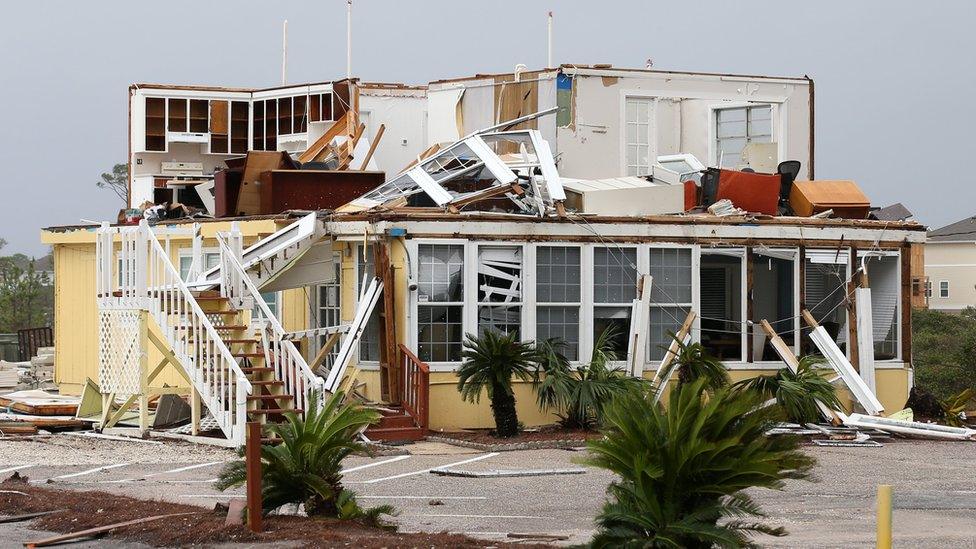
The wind ripped the roof off this house in Perdido Key, Florida
The storm has brought "four months of rain in four hours" to the city, Pensacola fire chief Ginny Cranor told CNN.
One person died and another was missing in the town of Orange Beach, Alabama, the mayor said without giving further details.
Sally made landfall at Gulf Shores, Alabama, at 04:45 local time on Wednesday, with maximum wind speeds of 105mph (169 km/h).
According to the NHC, Category 2 hurricanes have sustained winds of 96 to 110 mph, external. The NHC says a Category 2 storm's "extremely dangerous winds" usually cause damage to homes and shallowly rooted trees.
The storm later become a tropical depression with winds decreasing to 35mph, but it has been the torrents of rainfall and high storm surges that have caused most damage.
As the storm moved north from the coast, some 550,000 residents in affected areas were left in the dark on Wednesday night, according to local reports.
Sally is one of several storms in the Atlantic Ocean, with officials running out of letters to name the hurricanes as they near the end of their annual alphabetic list.
What's the latest on damage?
Rainfall is being measured in feet rather than inches in some places, but 18in (45cm) has been recorded across many areas.
Flooding to a depth of 5ft hit central Pensacola. The storm surge was the third worst ever to hit the city. Police there told people not to go out to look at the damage, saying: "It's slowing our progress down. Please stay at home!"
Although the winds did not have the devastating power of the deadly Hurricane Laura, which struck last month, they still ripped boats from moorings and sent one barge careering into the under-construction Bay Bridge. They were certainly high enough to topple high-sided vehicles.
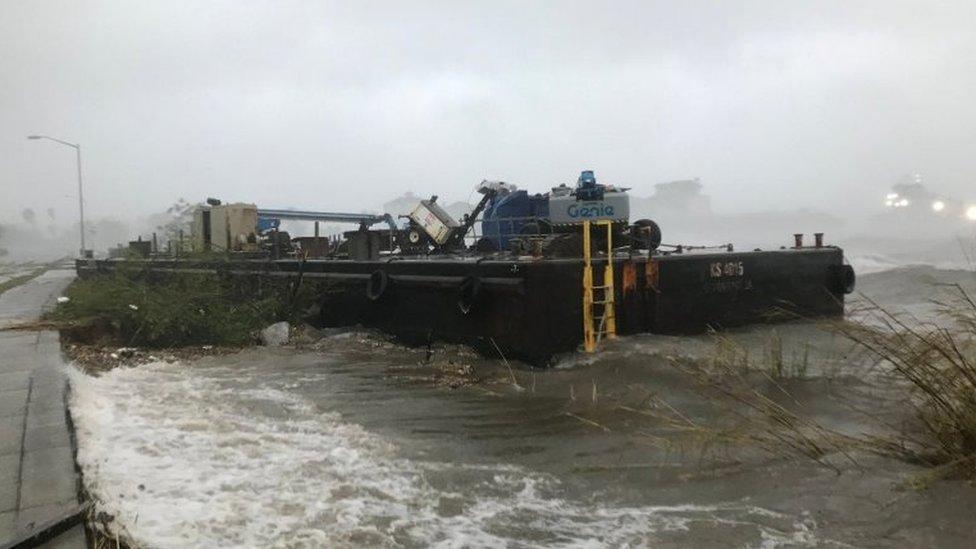
One of the barges that broke free in Pensacola, Florida
Another barge got loose and headed for the Escambia Bay Bridge but luckily ran ashore.
The sheriff of Escambia County said it had not been expecting the devastation wrought by Sally.
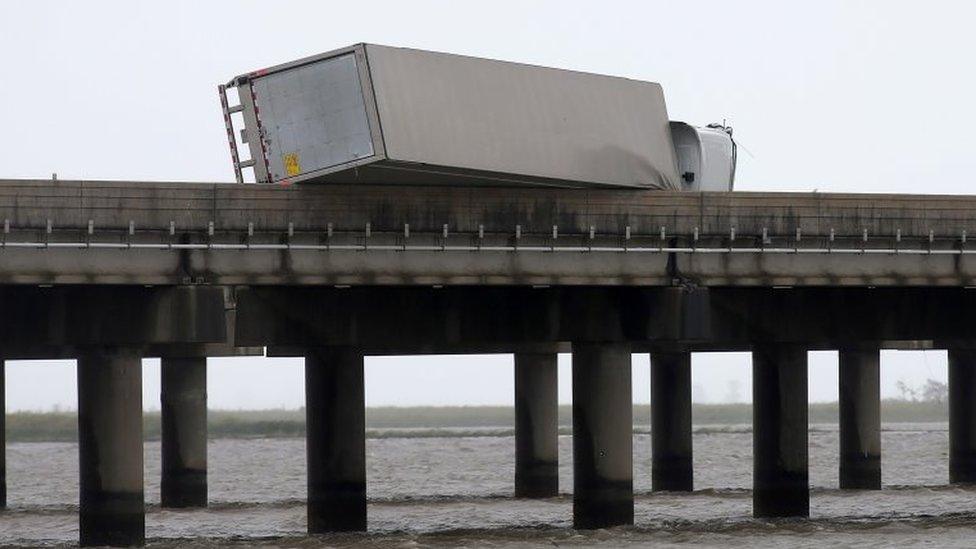
Overturned vehicle in Mobile, Alabama. Many roads there were hit by falling trees
Cavin Hollyhand, 50, who lives in Mobile, Alabama, told Reuters: "The rain is what stands out with this one: It's unreal."
There remains "a danger of life-threatening inundation" on the Florida-Alabama border, the NHC said.
Alabama Governor Kay Ivey said many areas around Mobile were seeing historic flood levels and urged people to heed warnings.
The pier at Gulf State Park in Alabama suffered significant damage.
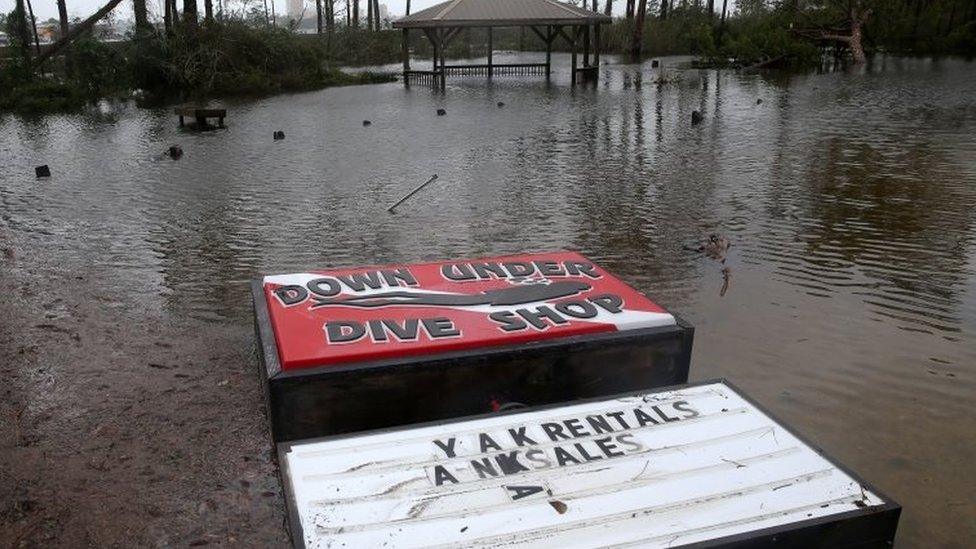
Gulf Shores in Alabama hosted Sally's landfall and its torrential rain
The latest on power cuts from the poweroutage.us website, external lists some 290,000 customers without electricity in Alabama and 253,000 more in Florida.
As well as pylons being brought down, many trees were uprooted.
Rain appeared to fall sideways in Alabama, which led to submerged roads as the storm inched ashore. Other areas along the coast were also affected, with beaches and highways swamped in Mississippi and low-lying properties in Louisiana covered by the rising waters.
Alabama, Florida and Mississippi all declared states of emergency ahead of the storm.
Is climate change causing the storm's slow pace?
John De Block, at the National Weather Service in Birmingham, Alabama, told the New York Times that Sally was drifting "at the speed of a child in a candy shop".
Sally's pace may be linked to climate change, according to experts. A 2018 study in Nature magazine found that the speed at which hurricanes and tropical storms move over an area had decreased by 10% between 1949 and 2016, a drop that was linked to an increase in total rainfall.
"Sally has a characteristic that isn't often seen, and that's a slow forward speed and that's going to exacerbate the flooding," NHC deputy director Ed Rappaport told the Associated Press.
In addition to Sally, there are four other tropical cyclones - Paulette, Rene, Teddy and Vicky - swirling in the Atlantic Ocean basin.
If only one more storm is officially named - Wilfred has already been chosen - meteorologists will run out of preselected names for the rest of the year and so will begin naming new storms after the Greek alphabet.


Have you been affected by Hurricane Sally? Share your experiences by emailing haveyoursay@bbc.co.uk, external.
Please include a contact number if you are willing to speak to a BBC journalist. You can also get in touch in the following ways:
WhatsApp: +44 7756 165803
Tweet: @BBC_HaveYourSay, external
Please read our terms & conditions and privacy policy
If you are reading this page and can't see the form you will need to visit the mobile version of the BBC website to submit your question or comment or you can email us at HaveYourSay@bbc.co.uk, external. Please include your name, age and location with any submission.
- Published28 August 2020
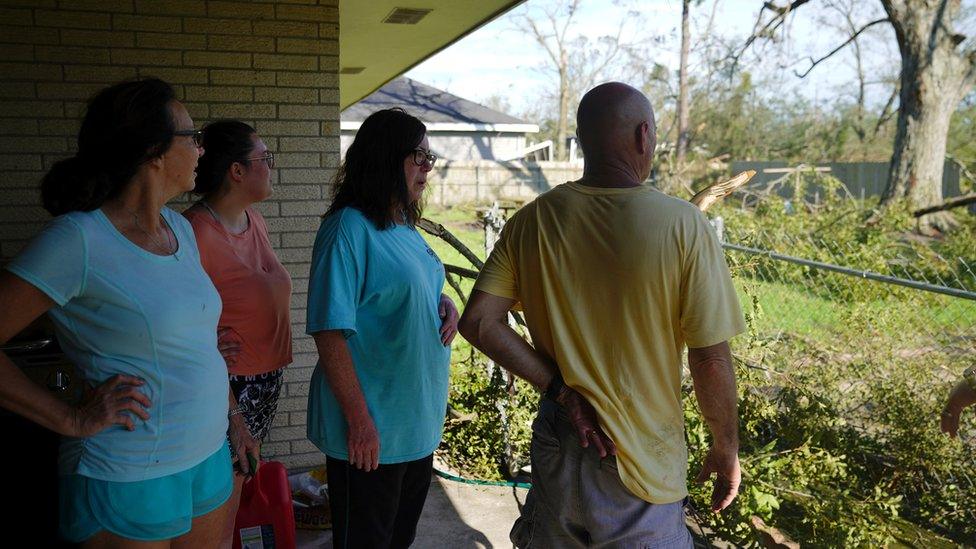
- Published15 September 2020
